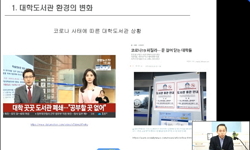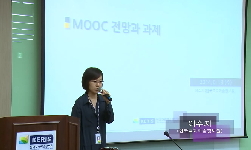The MFTZ, according to the "special law" was extablished in January of 1970 to contribute to the national and local economy through attracting more foreign investment which focuses on export promotion and technical improvement. With the establishment...
http://chineseinput.net/에서 pinyin(병음)방식으로 중국어를 변환할 수 있습니다.
변환된 중국어를 복사하여 사용하시면 됩니다.
- 中文 을 입력하시려면 zhongwen을 입력하시고 space를누르시면됩니다.
- 北京 을 입력하시려면 beijing을 입력하시고 space를 누르시면 됩니다.
輸出自由地域의 制度改編에 따른 課題와 發展方向에 관한 硏究 : 馬山自由貿易地域을 中心으로 = Future direction of development of Masan free trade zone
한글로보기https://www.riss.kr/link?id=T8146631
- 저자
-
발행사항
대전 : 韓南大學校 地域開發大學院, 2001
-
학위논문사항
학위논문(석사) -- 한남대학교 지역개발대학원 , 산업경영학과 , 2002. 2
-
발행연도
2001
-
작성언어
한국어
- 주제어
-
KDC
326.29 판사항(4)
-
DDC
337 판사항(19)
-
발행국(도시)
대전
-
형태사항
iii, 65p. : 삽도 ; 26cm.
-
일반주기명
참고문헌: p. 62-63
- 소장기관
-
0
상세조회 -
0
다운로드
부가정보
다국어 초록 (Multilingual Abstract)
The MFTZ, according to the "special law" was extablished in January of 1970 to contribute to the national and local economy through attracting more foreign investment which focuses on export promotion and technical improvement.
With the establishment of the WTO system and free trade, the world economy is witnessing the integration of trade, investment, and banking system centered-around the multinational companies. And countries around the globe are making all efforts to attract foreign investment in order to make the best use of the movement of the multinational companies. Moreover, Korea's neighbors such as China, Taiwan, and Singapore as well as the advanced nations are introducing free trade zone system in a way to become a hub of the world economy in 21century. the function of free trade zone is expanding to include one of the complex urban community with international trade and logistics, banking and R&D, not to mention production.
MFTZ has enormous potential for the growth including the sound financial fundamental and technology but its growth has been limited due to the confined area and lack of systematic supports.
Since its birth 30 years ago, Masan Free Trade Zone greatly contributed to the Korean economy to become a strong trading country and also to the growth of local economy and foreign investment. The export, which was mere US $860,000 in 1971, recorded $4.4 billion in 2000 increasing 60% from the previous year. In addition, the trade balance marked $12.6 billion of surplus. In this regard, it is believed that the role of Free Trade Zone has become more important than ever.
Therefore we should find the improvement measures to tackle the current problems, to provide the systems and practices in line with the new global norms, to actively deal with the ever-changing economic trend and therefore to internationalize the Korean economy and enhance the national competitiveness.
To do so, first I suggest that should expand the area of free trade Zone in order to meet the increasing demands of both the existing and new companies.
Second, I suggest that should innovate the structural problems in the current industrial complex and establish the in vestment environment on the competitive edge.
Third, I suggest that should construct the systematic foundation of Free Trade Zone to which the international standards are applied through various tax incentives and deregulation.
Forth, I suggest that should put focus on fostering Free Trade Zone as a hub of production, trade, investment, and logistics making the best use of intermediate position between Japan and China in terms of geography and industrial development.
목차 (Table of Contents)
- 목차 = i
- 제1장 서론 = 1
- 제1절 연구의 목적 = 1
- 제2절 연구의 방법 및 범위 = 2
- 제2장 자유무역지역의 이론적 고찰 = 4
- 목차 = i
- 제1장 서론 = 1
- 제1절 연구의 목적 = 1
- 제2절 연구의 방법 및 범위 = 2
- 제2장 자유무역지역의 이론적 고찰 = 4
- 제1절 경제통합의 본질과 이론적 성격 = 4
- 1. 경제통합의 본질과 유형 = 4
- 2. 경제통합의 이론적 성격 = 9
- 제2절 자유무역지역의 개념 및 특징 = 13
- 1. 자유무역지역의 개념 = 13
- 2. 자유무역지역의 특징 = 14
- 3. 관세자유지역과의 비교 = 16
- 제3장 자유무역지역제도의 도입배경과 제도개편 특징 = 19
- 제1절 자유무역지역제도의 도입배경 = 19
- 1. 수출자유지역의 역할 및 기능 다각화 = 19
- 2. 기존자유지역 관련 제도와 한계 극복 = 20
- 3. 국제표준(Global Standard)의 시범지역 조성 = 20
- 제2절 제도개편의 주요 특징 = 21
- 1. 입법목적 및 법률체계 = 21
- 2. 주요 개편내용 = 22
- 제3절 제도도입의 기대효과 = 24
- 1. 외국인투자 촉진 = 24
- 2. 국제교역 거점 구축 = 24
- 3. 산업구도 고도화 촉진 = 25
- 제4장 마산수출자유지역의 발전과정과 경제적 성과 = 26
- 제1절 마산수출자유지역의 발전과정 = 26
- 1. 마산수출자유지역의 설치 배경 = 26
- 2. 마산수출자유지역의 발전과정 = 27
- 제2절 마산수출자유지역의 현황 및 경제적 성과 = 33
- 1. 일반 현황 = 33
- 2. 입주기업에 대한 주요 인센티브 = 34
- 3. 마산수출자유지역의 경제적 성과 = 37
- 제5장 마산자유무역지역의 발전방향 = 44
- 제1절 마산자유지역 발전의 기본방향 = 44
- 1. 성장잠재력 = 44
- 2. 기본방향 = 45
- 제2절 개편후 주요과제와 발전방향 = 48
- 1. 자유무역지역의 확대 지정 = 48
- 2. 자유무역지역의 전형(Best Practice)구축 = 49
- 3. 기능강화를 위한 혁신체제 구축 = 50
- 4. 법·제도 개선 = 52
- 5. 인력양성 및 기술개발 지원제도의 실효성 제고 = 57
- 6. 협력적 노사문화 정착 = 58
- 7. 지역경제와의 연계발전체계 구축 = 59
- 제6장 요약 및 결론 = 60
- 참고문헌 = 62
- ABSTRACT = 64












